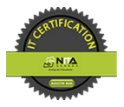In today’s rapidly evolving business landscape, organizations are increasingly turning to Robotic Process Automation (RPA) to streamline operations, reduce costs, and enhance efficiency. RPA has proven its value in automating routine, rule-based tasks, but the real transformative power of RPA lies in its scalability. In this blog, we’ll explore how to scale RPA effectively across your organization, unlocking its full potential.
The RPA Revolution
Before we delve into scaling RPA, let’s briefly recap why it has become a game-changer for businesses. RPA allows software robots or “bots” to mimic human interactions with digital systems, performing tasks such as data entry, report generation, and data validation quickly and accurately. This automation liberates employees from repetitive tasks, freeing them to focus on higher-value activities.
The Importance of Scaling
While implementing RPA in isolated processes can yield immediate benefits, it’s when you scale automation across the organization that you truly harness its power. Scaling RPA means extending automation to multiple departments, functions, and processes, creating a unified automation strategy. Here’s how to do it effectively:
Develop a Clear Strategy
Begin by defining a comprehensive RPA strategy. Identify the key areas and processes that can benefit from automation. Engage with stakeholders from various departments to understand their pain points and automation needs. This holistic approach ensures that your RPA implementation aligns with organizational goals.
Choose the Right RPA Platform
Selecting the right RPA platform is crucial for scalability. Look for a platform that offers robust scalability features, including centralized control, the ability to manage a large number of bots, and support for a wide range of applications and systems. Ensure it integrates seamlessly with your existing IT infrastructure.
Establish a Center of Excellence (CoE)
Creating a Center of Excellence dedicated to RPA is a best practice for scaling. The CoE serves as the hub for RPA governance, training, and support. It ensures standardization of processes, promotes collaboration, and facilitates knowledge sharing across teams.
Prioritize Security and Compliance
As you scale RPA, security and compliance become paramount. Implement security measures to protect sensitive data and ensure your RPA processes adhere to industry regulations. Regular audits and assessments are essential for maintaining compliance.
Provide Ongoing Training
Invest in continuous training and upskilling for your RPA team. As the automation landscape evolves, your team needs to stay updated on the latest developments and best practices. Training programs help maximize the efficiency of your automation initiatives.
Monitor and Optimize
Scalability doesn’t end with implementation; it’s an ongoing process. Continuously monitor RPA performance, gather data on the impact of automation, and use analytics to identify areas for optimization. Regularly review your automation strategy and make adjustments as needed.
The Benefits of Scaling RPA
Scaling RPA across your organization brings several significant advantages:
- Cost Savings: By automating a broader range of processes, you can realize substantial cost savings through reduced labor and error rates.
- Enhanced Efficiency: Scalability allows you to optimize and streamline complex workflows, resulting in faster task execution and improved operational efficiency.
- Increased Accuracy: RPA bots maintain a high level of accuracy even as they scale, reducing the risk of errors and improving data quality.
- Competitive Advantage: Organizations that scale RPA effectively gain a competitive edge by delivering faster, more efficient services to customers and stakeholders.
Final Thoughts
Scaling RPA is not just about automating more processes; it’s about transforming the way your organization operates. By developing a clear strategy, selecting the right platform, establishing a Center of Excellence, prioritizing security, providing training, and monitoring performance, you can expand automation seamlessly and reap the full benefits of RPA. Start your journey to a more automated future today.
Are you ready to scale your RPA efforts and drive digital transformation across your organization? Visit (insert link) to learn how we can help you achieve your automation goals.
Blog Reviewed by Kumaresan Selvaraj











